Jamm on It: Jon Glaser talks "Parks and Recreation," "Girls," & more at AADL
Downloads:
Michigan native and U-M grad Councilman Jamm -- nee Jon Glaser -- sat down with us to discuss his television and comedy career on Nov. 26 at AADL's downtown branch. He created, starred in, and co-wrote the TV shows Neon Joe Werewolf Hunter, Jon Glaser Loves Gear, and Delocated. He is perhaps best known as the aforementioned Councilman Jamm on Parks and Recreation and and Laird on HBO's Girls. Other TV credits include Inside Amy Schumer, Curb Your Enthusiasm, and Wonder Showzen.
Glowing Highlights: Laverne Cox at U-M's Center for the Education of Women symposium
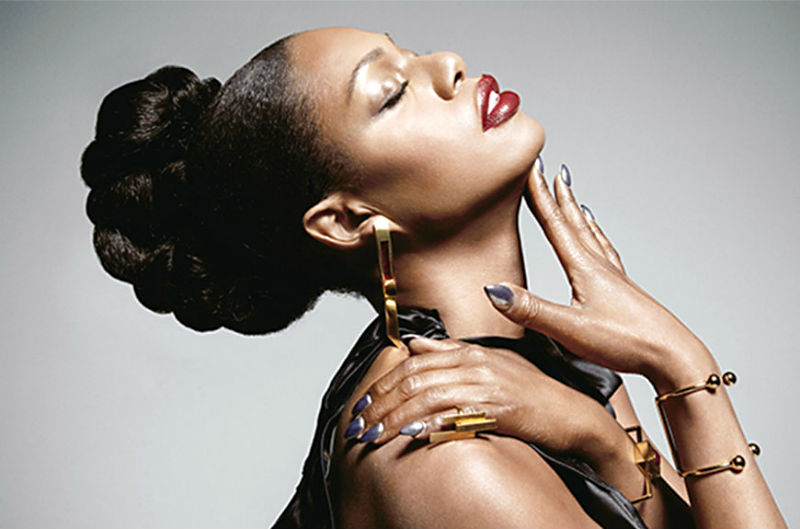
When Orange Is the New Black's Laverne Cox walked out onto the Rackham stage, my immediate thought is that she is even more beautiful in person than on screen or in photos, and I don’t exactly understand how this is possible. She looks as though the sun is shining directly on her. I think maybe this is what actually mastering the art of highlighting looks like, but I’m also sure I could put on all the makeup in the world and I would still never look like that.
I’d like to say that as soon as she started speaking, all such frivolous thoughts left my head, but frankly, that would be a lie. I did settle in with the rest of the sold-out crowd that has come to see her as the keynote speaker on Nov. 15 for the 2017 CEW Spectrum of Advocacy & Activism Symposium put on by the Center for the Education of Women at the University of Michigan, and for the next hour and a half, listened to a great (if slightly scattered) talk that encompassed gender and race theory, her life story, and how the Ann Arbor community should respond should white supremacist Richard Spencer come to campus.
Cox opened her speech with an emotional acknowledgment of the standing ovation she was met with when she walked out on stage: "To see a whole room of people standing, applauding for a black transgender woman? I don't know, it still feels revolutionary." And it did to me, too, to see a whole room of people react to her speech as though they were in church, clapping and snapping along to her powerful words. The crowd was extremely diverse and I was moved to see so many folks of all ages, races, and genders listen so intently to Cox without questioning her right to speak.
Cox titled her talk “Ain’t I a Woman,” after Sojourner Truth’s famous 1851 speech at the Women’s Rights Convention. White Americans have manipulated, exploited, and questioned the womanhood of black women since the day our country was founded, and now cis Americans do the same to trans women. Cox described how she, like Sojourner Truth before her, has been told that she isn’t really a woman, then executes a perfect hair flip and asked, “And ain’t I a woman?” The crowd went wild. The applause kept coming as Cox seamlessly transitioned from bell hooks to Cornel West to Judith Butler. I was trying to keep a list of every academic she mentioned and I wrote so fast that my hand cramped. I also had to ask my seatmate to borrow extra paper.
In recounting her life’s story, Cox told one particularly disturbing tale of her third-grade year, in which her teacher warned her mother that if she didn’t act soon, Cox would “end up in New Orleans wearing a dress.” Following this, Cox was forced to see a therapist who suggested injecting her prepubescent body with testosterone to make her more masculine. Luckily for Cox, her mother rejected this proposal, but that didn’t stop her childhood from being riddled with bullying, a church that branded her a sinner, and a suicide attempt at only 11 years old. Cox said she was lucky to get an excellent education and escape the violence of her youth. This is not, however, the experience of most trans women of color, a point that Cox was quick to make. She reminded the audience that 2017 has been the deadliest year on record for transgender Americans, and trans women of color are hit the hardest by this violence.
Despite this upsetting truth, Cox seemed genuinely hopeful about the future. She argued for bringing people into conversations rather than calling them out. Cox truly seems to believe in finding the humanity in everyone, although when asked about Richard Spencer’s possible visit to the University of Michigan campus, she was clear that certain beliefs and behaviors couldn't be tolerated. She stated that her current focus is on voting rights and working against gerrymandering. She implored the audience to “vote, vote, vote,” and she left us with the advice, “Stay woke and stay strong!” At that, the crowd rose as one to clap. Cox did one more hair flip, then turned and walked off stage, leaving behind some of the sunshine that she brought in.
A (partial) list of the scholars, artists, and activists Cox referenced in her speech:
Simone de Beauvoir
Brené Brown
Judith Butler
Ava Duvernay
Johan Galtung
bell hooks
Jen Richards
Angelica Ross
Sojourner Truth
Cornel West
Evelyn Hollenshead is a Youth Librarian at the Ann Arbor District Library.
Catching a Classic: "Casablanca" is 75 & everybody has seen it ... right?
Casablanca is 75 years old.
I was invited to see the film at Saline's extra fancy Emagine movie theater, with its leather recliners and cafeteria-style concessions. Casablanca is a beloved favorite of the person who invited me, and despite watching it numerous times, he was looking forward to seeing the film on the big screen.
I, on the other hand, was embarrassed by my reaction to his invitation. A normal person, a person with better manners would have answered the invitation with a polite "yes" or a polite "no." Instead, I said, “I bet I could write about it from the perspective of a first-time viewer.”
Active Culture: "INAATE/SE" meditates on Sault Ste. Marie's Ojibway tribe
Adam and Zach Khalil’s INAATE/SE is not a film to view if you’re looking for escapism. INAATE/SE is about the Ojibway community in Sault Ste. Marie and the movie bends and flexes filmmaking conventions and linear storytelling in order to tell about this tribe’s past and present as well as ask questions about its future. This film will make you think about our relationship to time and history, about the stories we tell, and the stories that are silenced.
On Wednesday, Oct. 11, Ypsilanti Experimental Space (YES) screened followed INAATE/SE, followed by a Q&A with Adam Khalil. The day before, Khalil was generous enough to meet me at Henry Ford Museum and spend a portion of his afternoon talking with me about his film and his process, opening himself up to an organic and wide-ranging conversation centered in this work. He allowed us to think together for a moment. We talked about survival, representation, what it meant for him and his brother to create this work and how, in some ways, both the past and the future live within us in the present.
This conversation has been edited for brevity and clarity.
Universal Horror: Classic monster movies at the Michigan Theater
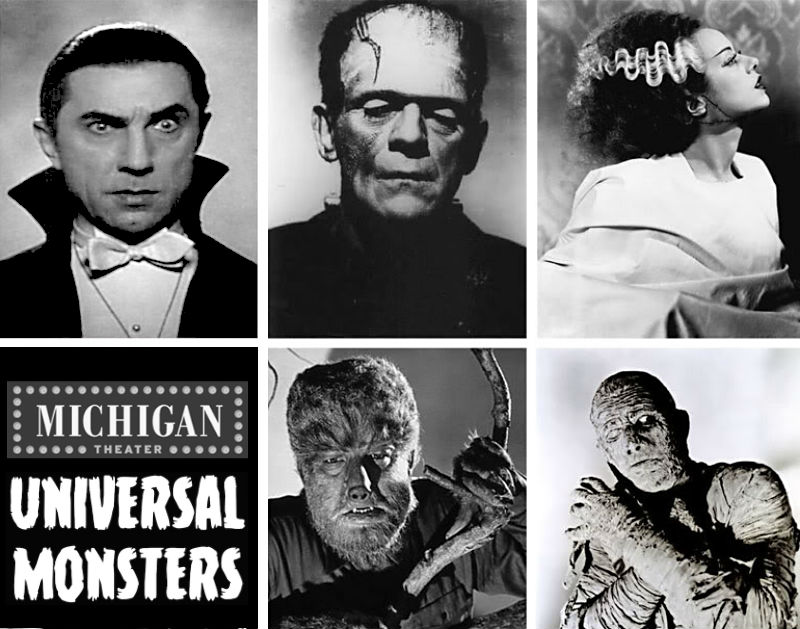
In the '30s and '40s, the most horrific words in Hollywood were "Dracula," "Frankenstein," "Mummy," and the names of the iconic creatures that implanted themselves into the popular culture.
For people who love cinema, an even more horrific word reigns supreme in Hollywood's marketing lexicon today: universe. This is the idea that several movies can be grouped together in order to manipulate ticket buyers into seeing films they might otherwise skip. We have the Marvel Universe (Avengers, Iron Man, Thor) at Disney and the DC Universe (Man of Steel, Batman v. Superman: Dawn of Justice, Wonder Woman) at Warner Brothers, and Universal attempted to launch their "Dark Universe" last summer with the Tom Cruise vehicle The Mummy. Yes, Universal plans to make a series of films connecting their classic monsters.
Thankfully, the Michigan Theater comes to the rescue every Monday in October by offering up the Classic Monsters series featuring the Universal originals: 1931's Dracula (Oct. 2, 7 pm) and Frankenstein (Oct. 9, 7 pm), 1935's Bride of Frankenstein (Oct. 9:45 pm), 1932's The Mummy (Oct. 16, 7 pm), and 1941's The Wolf Man (Oct. 23, 7 pm).
Theatrical Projections: Major plays and operas are just a movie ticket away
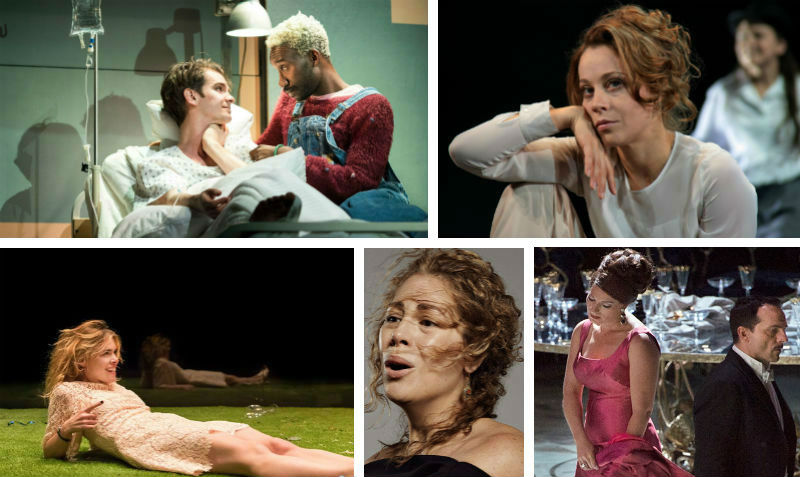
If you don’t live in New York City or London, and perhaps don’t have the money to go to The Metropolitan Opera or the National Theatre on a regular basis, you might feel like you’re missing out on some amazing arts events.
But HD broadcasts of productions from these venues to movie theatres around the world are a way for people all around the world to see legendary works like La Bohéme, Hamlet, Everyman,Der Rosenkavalier, and more, performed by legendary performers such as Helen Mirren, Benedict Cumberbatch, Ralph Fiennes, Plácido Domingo, Vittorio Grigolo, and Renée Fleming. NT Live has been broadcasting shows from the National and other theaters in London to movie theaters since 2009, and The Met: Live in HD has been broadcasting operas since 2006.
"The Zodiac Killer" comes alive in 4K at the Michigan Theater

Many filmmakers have tackled the true crime saga of the Zodiac Killer, who stalked Northern California and stole national headlines in the late '60s, but only one has been brave enough to try to face the murderer himself. That distinction belongs to Tom Hanson, an L.A. fast-food-magnate-turned-amateur-director who made his 1971 debut, The Zodiac Killer, with the express purpose of catching the actual Zodiac.
Right on the Chin: Bruce Campbell on B movies, "Evil Dead," and hosting a game show
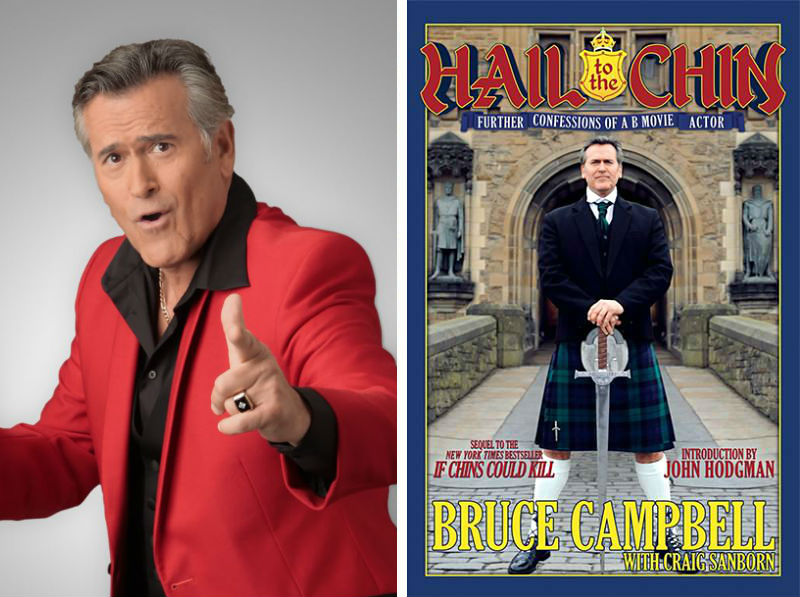
Actor Bruce Campbell has had some iconic roles in his life, but at age 65 he seems to have finally landed on the role he was truly born to play: that of a game show host.
The Royal Oak native is best known as the cocky zombie-dismemberer Ash Williams in the three original Evil Dead movies and the more recent Starz series Ash vs. Evil Dead, and as the washed-up military man Sam Axe on Burn Notice. But after hosting a charity game show for the military in 2015, Campbell was inspired to start pitching what he calls "a game show for geeks": Last Fan Standing. The comic con-themed streaming platform CONtv produced 10 episodes of the show, which may now be viewed online. Campbell is clearly in his element on the show, mercilessly razzing his contestants, handing out dollar bills from his own pocket to those who do well, and generally reveling in his role as an elder statesman -- or perhaps just a dorky old dad -- of nerd culture.
Campbell has continued Last Fan Standing in select promotional appearances for his newly released second autobiography, Hail to the Chin: Further Confessions of a B Movie Actor. Following up on his 2001 New York Times bestseller, If Chins Could Kill: Confessions of a B Movie Actor, Campbell's latest tell-all proves that he's still just as willing to turn his smart-aleck sense of humor on himself. From his tale of wrecking a tank while on a USO tour in Iraq to his epic story of almost getting cut from his minuscule role in Evil Dead director Sam Raimi's Oz the Great and Powerful, Campbell maintains a level head, a sense of humor, and a true passion for his business.
Campbell will appear at the Michigan Theater on Wednesday, August 30, to host Last Fan Standing and talk about his latest autobiographical book. We chatted with him about game shows, changing perceptions of B movies, and whether he really cares about reviews.
Red Scare: Glenn Frankel's "High Noon: The Hollywood Blacklist and the Making of an American Classic"
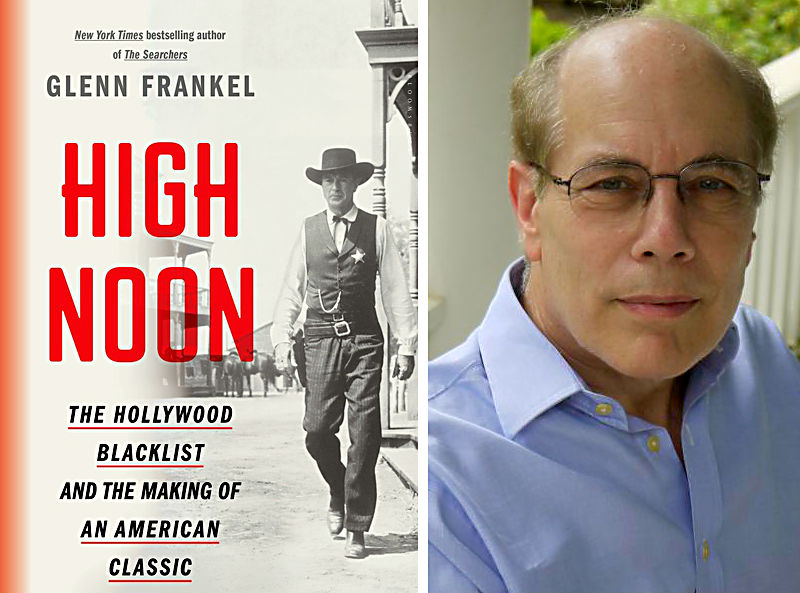
Each year we hear about how political the Oscars are, but this may have never been truer than in 1953 when High Noon scored big with critics and moviegoers the year before (and earned seven nominations), but also found itself in the crosshairs of the House Un-American Activities Committee.
“There was a campaign to make sure (High Noon screenwriter Carl Foreman) didn’t win, because that would be too embarrassing,” said Pulitzer Prize-winning journalist Glenn Frankel, who just published High Noon: The Hollywood Blacklist and the Making of an American Classic.
Frankel will talk about his latest book at the Westgate branch of the Ann Arbor District Library on Friday, June 23 from 7-8:30 pm.
Back to the Future: Kevin Smokler, "Brat Pack America: A Love Letter to '80s Teen Movies"
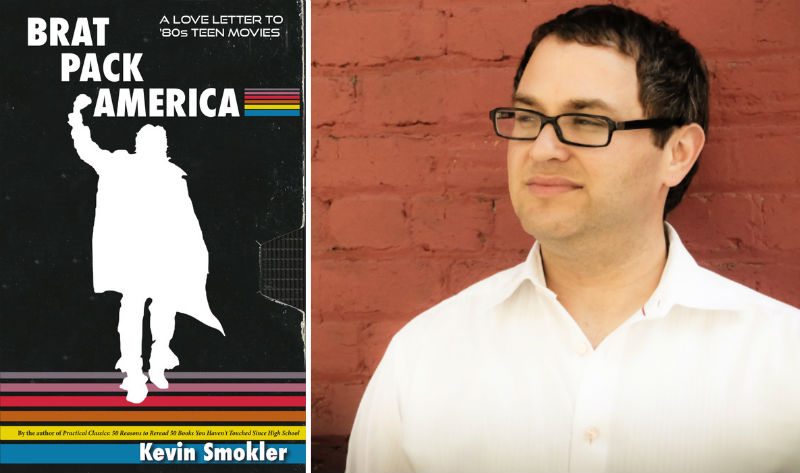
The 2010 Academy Awards telecast devoted a nearly seven-minute chunk of airtime to commemorating the life and work of John Hughes, a director/writer/producer who never received an Oscar nod in his life.
Kevin Smokler's recent book, Brat Pack America: A Love Letter to '80s Teen Movies, explains why those Hughes films stand the test of time. But his interests run much wider than just Sixteen Candles, The Breakfast Club, and Ferris Bueller's Day Off. Throughout his enjoyable survey of the decade, Smokler persuasively argues that, during this time, setting began to matter more to teen films than ever before.
Smokler will return to his original hometown of Ann Arbor on Monday, June 12, at 7 pm for an appearance at Literati. I spoke with the author about Reagan-era high-points as varied as Risky Business, The Lost Boys, and Back to the Future, as well as the Hughes canon.
Q: How did the concept of Brat Pack America come to you?
A: I had been wanting to do a book about '80s teen movies for a long time because I always saw them as a group, and not just because of John Hughes or because of the label Brat Pack that was unceremoniously given to this group of young actors. I had been an early teenager at that time and had recognized that there was a bumper crop of movies made about people my age and slightly older than me. I'm not the first person to come to that realization. The movies have been written about in one way or another several times, and several times admirably. I didn't quite see what I had to add to that story. So since that's usually where I begin most of my books -- having an idea off in the distance like the green light at the end of the dock -- I just sort of wander toward it and hope when I get there the path I've taken is clear, and I have something to report back once I get there.
In this particular case, I spent a lot of time with a stack of DVDs, and what I noticed is I kept circling back to this memory I had of my father, who had grown up in Detroit and really liked telling me and my brothers about all of the things that came from the middle of the country. One of those things was John Hughes; he was enormously proud of the fact that John Hughes was a Michigander and made all of his movies proudly about the Midwest. I remembered thinking to myself, you say "Chicago filmmaker" and you could say William Friedkin or John McNaughton, or a hundred other people, but in my mind, the first name that comes forth is John Hughes. So I started thinking about that and thinking about the movies at that time that were self-consciously about the places where they happened. One night, late into the night and three iced coffees to the wind, I scrawled "Brat Pack America" down on a pad and fell asleep. That's where the idea started from. I've always been an Americana buff, so I'm always trying to work the word "America" into the things I do and actually, in this case, it made sense.
Q: Your examination of the early hip-hop movies being specifically about New York was eye-opening.
A: I'm sort of dubious of culture writing that assumes a part is actually a whole so I think there are books that say, "I'm going to write about the indie-rock movement of the 1980s," and they say so up front, and they set their boundaries by that, and that's what they stick to. Then there are books that say the same thing but say, "I'm going to write about the music of the 1980s," but they only write about white guys with guitars. That's just sloppy at best, and at worst it's making a lot of assumptions. I was very careful not to assume an '80s teen movie meant John Hughes and his closest disciples because I think the category is much richer than that. When I went looking, there were these two strands that popped out at me, the doppelgangers of the John Hughes movies -- the dystopian dark comedies like Repo Man and Heathers, and also the early generation of hip-hop movies, because hip-hop was a young artform perpetuated by young people.
Q: One of my earliest moviegoing memories was walking down to the local one-screen theater in my hometown and being denied a ticket to see The Breakfast Club because it was rated R. It was the only Hughes film to have an R rating, and I was curious if you have any thoughts about that.
A: In my research about Hughes, and in talking to his family, it didn't come up all that often, that ratings were an issue. Hughes largely made movies with one or two studios. For someone who was a savvy businessman, he didn't have a whole lot of patience for or interest in the business of making movies. I think he dealt with studios as little as possible, and the agreement he had with them, even if it was unspoken, was largely that he would bring in something on time and on budget that they can use and make money on without spending a ton on marketing. He delivered on that promise over and over again.
I think when he wanted to do something that was more challenging, like The Breakfast Club, he, in fact, wanted to make The Breakfast Club first, but the studio sort of said, "How exciting is seeing a bunch of teenagers sit around all day going to be?" So he very smartly chose to make Sixteen Candles first, which is a lot more high concept and whose appeal is more straightforward. Not that Sixteen Candles was such a box office success, it wasn't, but it was proof of concept that Hughes was a self-sustaining unit who could do things his way and good actors wanted to work with him.
I think they [the studios] sort of counted on him to deliver the goods affordably. I don't think they worried too much about ratings. Maybe they just assumed that if the R rating was prohibitive for teenagers seeing The Breakfast Club in the theater it would bounce back on video, and it turned out it was a box office hit anyway.
Q: Have you rewatched these movies with kids?
A: I don't have kids, but I've watched them other people's kids, which has been pretty interesting. I watched both and Back to the Future with a friend's young teenagers, and the two things that jumped out at them are that the kind of bullying you see in The Karate Kid isn't done much anymore, at least not in their San Francisco public school world. It's more of the spreading vicious rumors on social media kind of bullying. The thing I have to say about Back to the Future is, the chronology was very confusing for them because to them 1985 is the past, and 1955 is the way past, so most of the time travel jokes were lost on them, and the social mores surrounding parents and kids were lost on them, too. I think they mostly thought it was funny, and the DeLorean was cool.
Q: I have two teenage girls, and I know the ones that speak to them as closely as they did to me at that age are The Breakfast Club and Ferris Bueller, both of those really work for them still.
A: I didn't notice this until I read some biographies, but John Hughes always operated from sort of an archetypal, slightly mythic, instead of grounded in realism, approach. He clearly makes use of lots of Hollywood archetypes. What is Sixteen Candles if not a Doris Day/Rock Hudson movie? What is Ferris Bueller if not On the Town but with high school students instead of sailors? I think the fact that those movies hold up is in part due to plots and tropes that have been with us since the beginning of moviemaking. Another part of it is due to John Hughes skill at being specific and archetypal and relatable and mythical at the same time.
Q: When you mentioned the time frame in Back to the Future it made me think of one of my favorite passages in your book about how Francis Ford Coppola's adaptation of S.E. Hinton's The Outsiders is a film shot in the '80s, set in the '60s, with the iconography of the '50s, from a master of the '70s.
A: And filmed like it was set in the '30s, like it was in CinemaScope like Gone With the Wind. I think a lot of that had to do with how young S.E. Hinton was when she wrote it. She was writing a book about her peers, it was published when she was 20, so she was doing on-the-ground reporting. It was not nostalgic when it was written. This may be me being elitist, I think because the book was set in Tulsa, Oklahoma, and not in some major urban area, I think the iconography is not the leading edge. There is a reference in some of S.E. Hinton's later work to hippie kids, but even though The Outsiders was published the same year as the Summer of Love and Sgt. Pepper, it feels like it comes from an earlier era. It was coincidence that the movie was made in the '80s, 15 years after it was published. That's when it came to Coppola's attention. He had kids just the right age to read the book in school. It did dovetail nicely with the fascination with cars with tailfins, and leather jackets and greasers that was part of the early '80s culture.
Q: After revisiting all of these movies doing research for the book, I'm curious what movie were you surprised by how your feelings toward it changed, either positively or negatively, since you saw them as a teenager.
A: The chapter on horror movies didn't make the final manuscript of this book. As a kid, I was too scared to go see horror movies, so I was shocked at how great a movie Halloween is. I just thought it would be trashy and cynical and gross, and I think Halloween is a masterstroke of modest budget filmmaking, of making something out of nothing. I think Halloween is genius. I remember being crazy about The Lost Boys, and I think The Lost Boys is now your basic teen vampire movies. It's only 90 minutes, so by the time it gets ridiculous, it's over. But I think it looks great; that's mostly Joel Schumacher's doing, and it makes spectacular use of Santa Cruz. There's been a dozen movies shot since in Sana Cruz and they all work to varying degrees, but when you go to the Yelp reviews of the Santa Cruz boardwalk nobody mentions Killer Klowns From Outer Space or Riding Giants or any of those movies; they all mention The Lost Boys. I don't think The Lost Boys is a great movie; it's a greatly produced movie. I think it looks great, and the use of setting is fantastic.
I think it really would have helped had I seen Gremlins at that age. I didn't. In retrospect, there's not much to it. It's fun, it's well cast, it's naively racist, which is annoying. Many Steven Spielberg acolytes at the time were playing with this vaguely racist idea of a poor helpless group of white kids menaced by a mean outside non-white force. Gremlins is an example of that; Adventures in Babysitting is an example of that. I don't think those movies were intentionally prejudiced, but they were playing with a lot of notions that seemed at best dated and at worst terribly closed-minded. I don't think those movies wear very well. And I'm not the kind of person who opposes showing kids movies with outdated ideas; it's a good excuse to have an honest conversation with them. But I think if your kid is watching Sixteen Candles and guffawing at Jake Ryan's date rape joke, that's a teachable moment.
Q: What's the best movie that you couldn't work into the book that you really wanted to?
A: Risky Business. I had a whole chapter that was fun to write, I hated to let it go, about Risky Business, Adventures in Babysitting, Midnight Madness, the whole kids-let-loose-on-the-big-city-at-night kind of movie. It was too similar to other chapters and the manuscript was too long and it had to go. Risky Business is one of my absolute favorite movies. I think that movie is fun to watch, it's a masterstroke of satire of '80s youth and ambition. It's sexy as hell. It's one of the most inspired scores in movie history.
Q: One of the most intriguing concepts of your book is that place matters. You really get at how these movies defined where they took place, and that was a necessary element to the overall story. I'm curious, post-Brat Pack America, what films do you see are worthy of a spot on that map?
A: I don't think they use place in exactly the same way. If we're just talking about teen movies, a movie like (2015's) Dope is a really interesting reconfiguring of the map of Los Angeles where working class black and Latino kids live. If Dope was made a decade before, it would take place in South Central. Dope, made in 2015, takes place in Inglewood. Very self-consciously Inglewood. That's not just the interest of the director -- who set his film The Wood (1999) there as well -- but also showing that sort of archetypal working-class black and Latino teenage story has moved there geographically. I think that's really interesting.
I think a movie like (2012's) The Perks of Being a Wallflower and (2015's) Me and Earl and the Dying Girl, which are both set in Pittsburgh, is infinitely more interesting having been set in Pittsburgh and is an exemplar of how Pittsburgh is the revitalized former rust belt city. Is it crucial those films take place in Pittsburgh? No. Does it say something interesting about what place Pittsburgh holds in our national consciousness? Yes. What other movies self-consciously takes place in Pittsburgh? The Deer Hunter. That's a totally different Pittsburgh than the one in Perks of Being a Wallflower. It says a lot about how far we've come that the last shot of Perks of Being a Wallflower is -- the music swells [David Bowie's "Heroes"] -- and they emerge from the Fort Pitt Tunnel and there they are driving into downtown Pittsburgh. If that movie was made in 1987, it would have them going the other way through the tunnel and driving away from downtown Pittsburgh.
In the '80s we were coming out of an era where moviemaking seemed like a very coastal thing and that was largely the interest of Coppola's generation of filmmakers. My argument in Brat Pack America is the opening of the image of growing up in America at this time. It becomes a life cycle event that happens all over America, not just in the Mid-Atlantic, the Northeast, and California. There's a democratizing effect on the stories of being young in America at that time. That becomes less necessary once A) It's done, and B) Once we have the Internet and we can travel further, faster in our minds without ever leaving home.
Perry Seibert is a movie lover, freelance writer, and founding member of the Detroit Film Critics Society. Follow him on Twitter @Perrylovesfilm.
Kevin Smokler will talk "Brat Pack America: A Love Letter to '80s Teen Movies" at Literati on Monday, June 12 at 7 pm. Read our previous interview with Smokler as part of a preview for the Michigan Theater's "Kids in America: '80s Teen Classics" series.


































